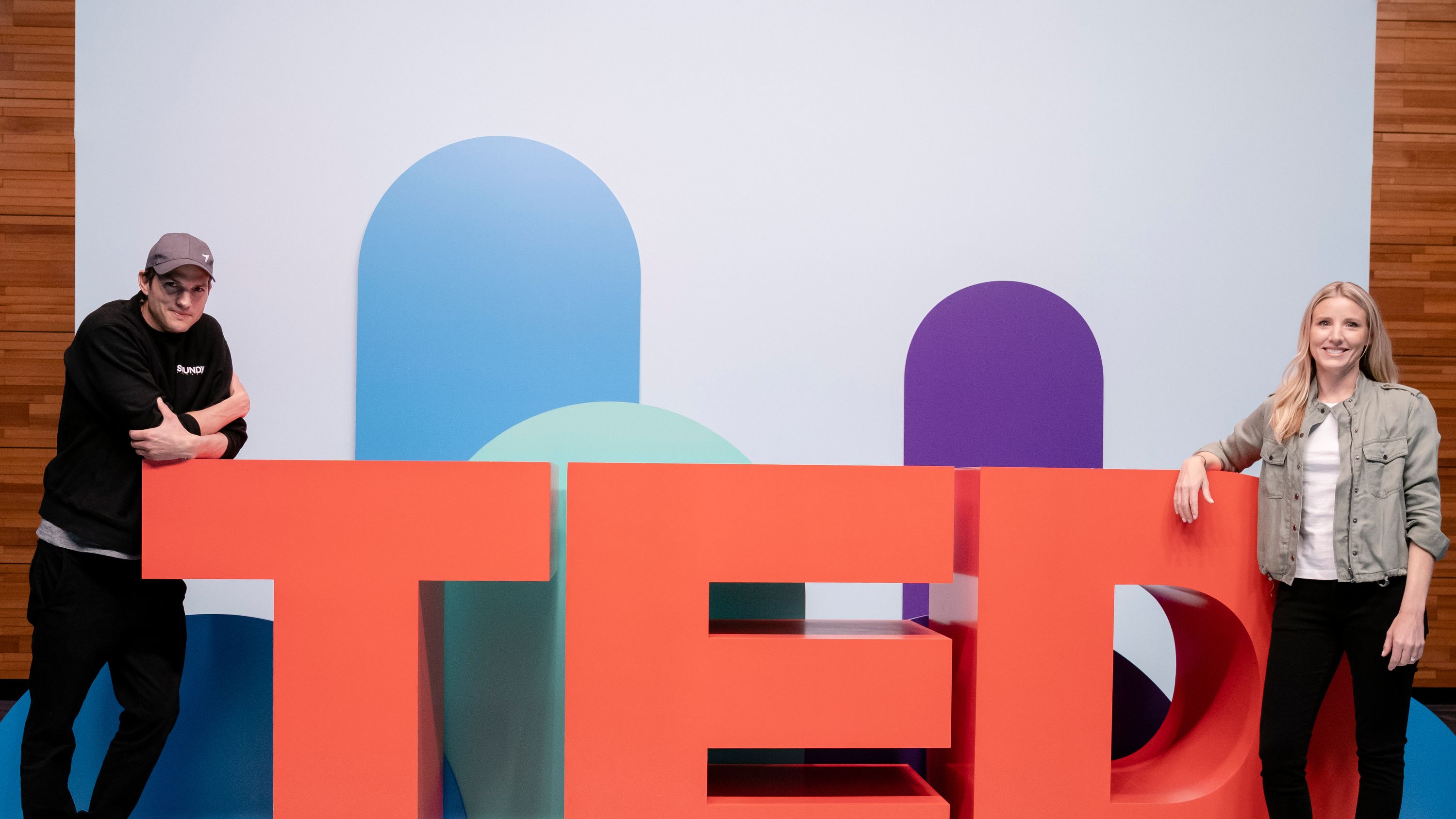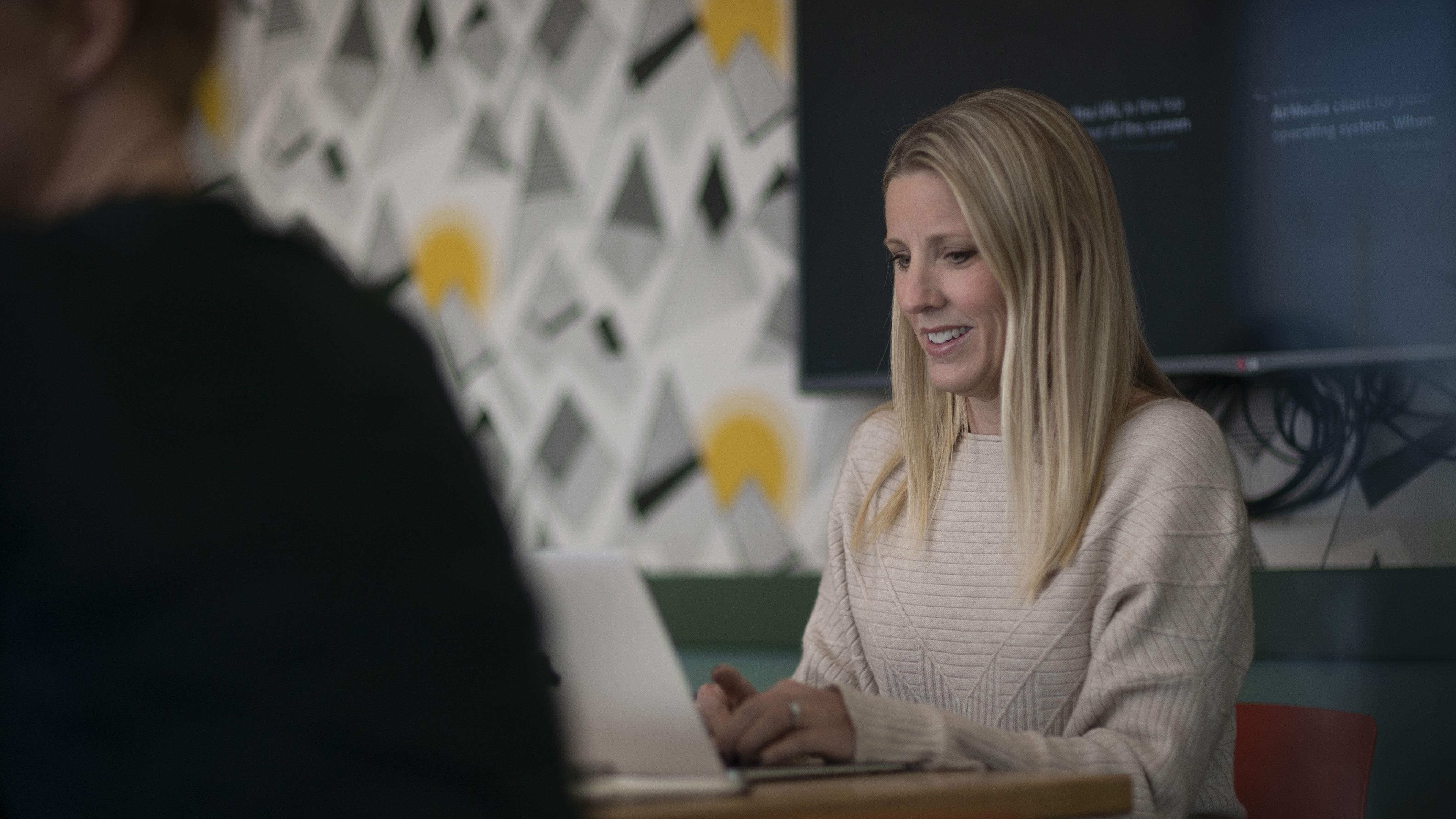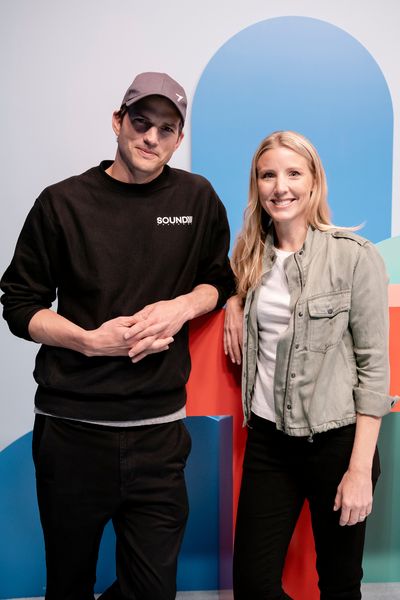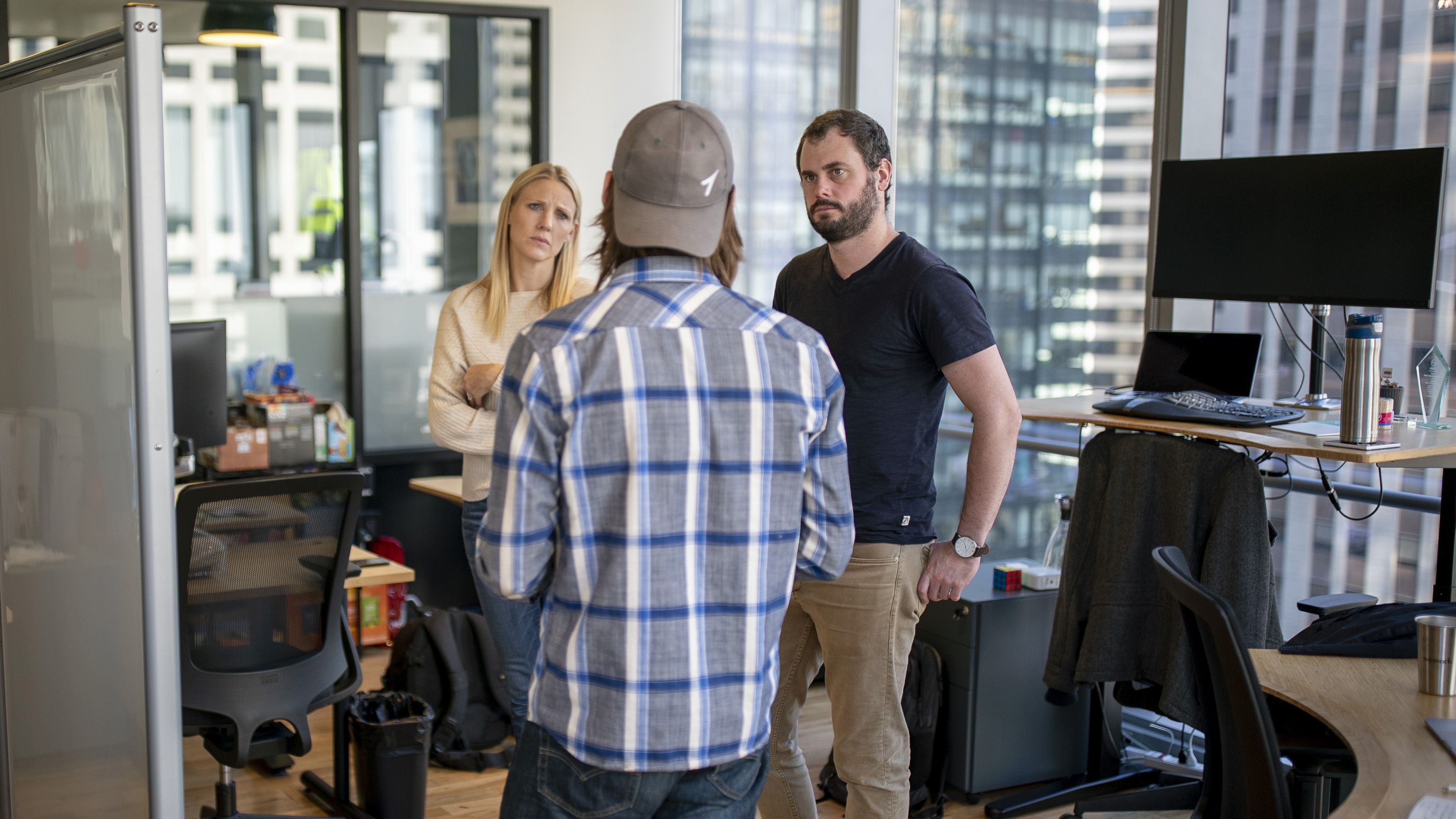"How We Won Millions of Dollars from TED to End Child Pornography"
Julie Cordua, CEO of Thorn, has spent the last year working on a plan to end child sexual abuse online. Last night her organization was given millions of dollars to do so.

Julie Cordua is CEO of Thorn, an organization co-founded by Ashton Kutcher that builds technology to eliminate child sexual abuse from the Internet. Child sexual abuse material, also known as child pornography, is the documentation of the (often violent) sexual abuse of a child.
Over the last two decades, technology has dramatically changed the landscape of child sexual abuse. The spread of child sexual abuse material has exploded with ease of production, faster internet speeds, and anonymization. In 2018 in the U.S. alone, more than 45 million image and video files containing suspected child sexual abuse were reported to the National Center for Missing and Exploited Children. The mere existence of these images re-victimizes the child. Victims know that their abuse continues to live online for thousands of people to view globally, and the sheer volume and accessibility contributes to the normalization of abuse.
Thorn works to understand the intersection of technology and child sexual abuse and then creates the programs and technological products that help law enforcement identify children faster, help companies stop the spread of abuse material, and build a more resilient, aware, and engaged society.
In April 2018, Thorn set its sights on a big goal: eliminating child sexual abuse from the internet. This is no small task and we knew we would need funding and a global community to make it happen. So we decided to apply for TED’s 2019 Audacious Project. Each year, The Audacious Project identifies and invests millions in global changemakers with the biggest, boldest, and most actionable ideas that have potential to affect millions of lives.
At the heart of Thorn’s proposal were four key tenets: 1) Provide global law enforcement the software needed to find victims faster; 2) Equip private companies that host user generated content with the software needed to stop the viral spread of child sexual abuse content on their platforms; 3) Connect global data on this issue in order to find children faster, and remove content faster; 4) Invest in building out research and development capacity specifically to defend our children as technology continues to change our lives.
Here is the story of how Thorn went from an idea to a funded plan to change the world.
April 11, 2018
It was a random Wednesday evening. I’d wrapped up work for the day, had three kids’ homework completed, dinner done, and the kids were having water fights in the tub. I snuck away to take a mindless social media break. I came across a TED post on Facebook about a new initiative to identify, finance, and promote Audacious world-changing ideas.
Get exclusive access to fashion and beauty trends, hot-off-the-press celebrity news, and more.

Immediately pinged the team. (Thank you Slack for real-time mind melding!)
In our board meeting earlier that year we’d been challenged to think bigger. We had been at this work for several years and had created products that were working, helping to find kids around the world, and stopping the spread of abuse content online.
The whole idea behind The Audacious Project was to break that old way of doing things and invest in big ideas just like the private sector.
Now we were struggling with how we could possibly raise the amount of money needed to reach our goal of eliminating child sexual abuse from the internet completely. Scaling products globally—with a potential revenue model in play—as a nonprofit isn’t easy, because it takes vast amounts of money that nonprofits usually have to raise slowly, while developing strong relationships with donors. We had no time to waste in trying to help these kids.
The whole idea behind The Audacious Project was to break that old way of doing things and invest in big ideas just like the private sector. This was exactly what we needed.
June 8, 2018
Today we hit send our concept for a world changing idea—“The spread of child sexual abuse across the internet is an invisible and growing public health crisis. Like eradicating a disease, Thorn aims to eliminate child sexual abuse from the internet”—along with a one minute video explaining our idea.

And we held our breath for the next month while we waited to hear.
July 16, 2018
Our idea was accepted into the next phase of The Audacious Project. We had no idea how many ideas were submitted, and we didn’t know what the process was going to look like, although our sense was that, from thousands of applications, there are hundreds like us moving on. Now, our “applying on a whim” vibe is turning into a “time to get serious” vibe. Excitement quickly turns to panic; we’re not sure how we’re going to turn our idea into a 10-page proposal with a seven-year budget plan attached in two weeks!
In addition to trying to keep up with our regular work, our team is already deep into the vetting process for another award—the Skoll Social Entrepreneurship Award—which means more hours committed to meeting with that award’s evaluation committee and coordinating references, etc. This is by no means a complaint—we are incredibly lucky to have these opportunities in front of us—but these weren’t things we planned for and trying to figure out how to do it all (oh, and be a mom, a wife, a friend) isn’t easy.
So, we hired a grant writer. One of the best decisions we made!
This work MUST happen. It won’t only happen if we get this funding; it will happen no matter what, period.
Within two weeks, this magic wordsmith took our plan and vision and crafted what one donor went on to say was “the clearest articulation of what you do and what you plan to do” that they had ever read. That paid off!
We hit send.
August 27, 2018
Over the last two months we’ve gone from holding our breath to taking deep breaths. We’ve had a few calls with The Audacious Project team to answer questions on the proposal and sent in some supporting information.

By this point, we’re daring to allow ourselves to really think, What if? What if we could secure one of the largest investments this field had ever seen…for these kids and for an issue that is often overlooked? Holy cow!
And, we’ve talked ourselves into believing that this work MUST happen. It won’t only happen if we get this funding; it will happen no matter what, period. If we don’t secure the funding this way, it will be a lot harder. We would have to raise the money another way. But why wouldn’t we envision a world where child sexual abuse imagery had been eliminated from the internet? Why wouldn’t we shoot for the ultimate goal?
And then the news came: “We’re pleased to share that your proposal has made it through to the 2019 shortlist!” We have no idea how long that shortlist is, but we’re ecstatic.
For the next three weeks, we’ll do rounds of questions with The Audacious Project team and, if we make it through, we’ll head to TED bootcamp in early October to tighten up our proposals.
September 13, 2018
WE MADE IT!!! We’re heading to NYC for a week of work to refine our proposal and prepare for the final stage of review. We’re literally screaming and jumping up and down in the office.
This is the kind of opportunity you can’t plan for, but you must be ready to capture. We’re ready. It will take lots of work and sacrifice by many on the team—but we can rest later. Right now we’re competing only against ourselves to make this idea as inspiring as possible and the plan as achievable as possible.
October 2, 2018
Sarah Gardner, our head of development, and I hopped a plane to NYC to spend three days in TED bootcamp. I have to admit, I hadn’t fully prepared and didn’t actually read the pre-brief until I sat down on the plane. (I’m hoping a few working moms out there can relate?) As I flipped through the list of participants, I thought there had to be some mistake. We were joining some of the most amazing individuals I’d heard of—people who had dedicated their lives to science and social impact, working to reverse climate change, protect our oceans, educate girls across Africa and India, fight for policing equity, create custom proteins (what even is that??).
Imposter syndrome was real. I had a moment of panic: Was I good enough? Was our plan good enough?
Clearly there had been some mistake, I thought. It didn’t help that our bio was last in the document, so I thought maybe they just forgot to delete the slide!
Imposter syndrome was real. I had a moment of panic: Was I good enough? Was our plan good enough? Was what we had accomplished so far really real? (I know that sounds weird, but it’s amazing what insecurity can do to your mind).
Those few days were the best kind of bootcamp. They broke us down (in the most loving, encouraging of ways) to build us back up stronger.
During the week, which was part inspiration and part planning, we pushed through our doubts and replaced them with a plan and positive thoughts. Could we really do this? Was our idea too crazy? Were we the ones who could help make this happen? What negativity may come if we put our bold idea out into the world? We worked through all the things that we were worried about but hadn’t been confident enough to name.
We spent those days putting pen to white board and paper and working through the key deliverables and milestones of our plan—what was strong, what was weak, what was most risky—to make it real and tangible. To make sure that our plans were not only bold, but possible.

The side benefit of this whole process that I’m most grateful for is the people we met. The joy and vision that each of these people bring to their work is incredible. It reminded me to lean into the joy of this work, even if it is difficult.
Sitting in that room, as we prepared to leave, one person commented, “even if only a few of these proposals become reality, our world will be a much, much better place.” That was powerful, knowing we were sitting with those who would leave a positive lasting imprint on our world.
November 20, 2018
Thank god for Google docs. For the last eight weeks we’ve been living and breathing the refinement of a new and more in-depth 25-page proposal with people in all time zones contributing to, editing, challenging, fixing.
TED partnered with Bridgespan Group, an organization that consults with nonprofits, donors, and investors to advance learning and accelerate the impact of their work and philanthropy. Each finalist was assigned Bridgespan ‘coaches’ who challenged us and cheered us.
“Even if only a few of these proposals become reality, our world will be a much, much better place.”
I appreciated each ‘anonymous lemur, racoon, kangaroo’ (i.e. our amazing ‘coaches’ from Bridgespan and TED logging in from home Gmail accounts), who popped in to our Google doc to join us at 11 p.m. as we crafted the words that brought our vision, our work, our partners, and our goal to life. There were side chats in the docs—virtually clinking of our glasses of wine—as we crafted what we hoped would be a compelling proposal.
Today we hit send and then tried to “relax” over Thanksgiving. We would hear before the holidays if we got the chance to be presented to the funding board.
December 14, 2018
We’re supposed to hear this week whether we made it to the next round or not. Every day is a master class in trying to remain calm while containing endless curiosity.
I’m in an all-day meeting at a WeWork office in Burbank, CA, with a few of our team members. We’re trying hard to focus on the work at hand, but may be sneaking looks at our email and phones every few minutes to see if there is a note.
I leave the room for a five minute break and come back.
Sarah screams, “Read your email!” I didn’t move fast enough. “READ YOUR EMAIL!!!!!”
“We’re thrilled to announce…”

'The author celebrating with Sarah Gardner, Thorn's head of development.'
All the calm containment of curiosity went out the window and we lost our minds! We called a quick all-hands video chat (we’re a virtual-first team) so we could share the celebration across the company.
We’re heading to NYC in January for the final round of prep and to tape a TED talk that won’t be public, but will be part of our final proposal to the donors.
First week of February, 2019
The donor meetings have begun. The donors are a group of lifelong and new philanthropists who believe in making big bets to advance social change and address some of society’s most intractable problems. They’re evaluating a handful of proposals to determine which and how many will be funded and we’re on standby to answer questions. If I’ve learned nothing else through this process, it’s how to appear calm while dying of curiosity, anticipation, excitement on the inside!
A few days into the process, we’re invited to a video chat that we thought would be to answer questions about the proposal. The video link goes live and, as Sarah said later, “it felt like that moment when you get proposed to; you know you’re going to remember it.”
One of the donors says, “We were all incredibly moved by your proposal. We want to be a part of making this happen.” These donors took a stand! They committed the resources! They invested! We are one of eight organizations chosen to share in more than $280 million dollars in funding.
“We were all incredibly moved by your proposal. We want to be a part of making this happen.”
With what we work on, we often say that once you know, you can’t unknow. Usually that means you’re called to action. That was so true in this moment.
This work happens in the shadows—the abuse and the work that we do. It is a hard subject to talk about. It hurts. So to know that these donors were willing to move forward and to invest, to help make this work possible and to help elevate this issue—put it on a level of girls’ education, global warming, global health—was incredibly powerful.
I have so, so many thoughts! Proud, excited for the potential, nervous for all the decisions and moves we need to make as a company, hopeful that we can use this moment to benefit the whole field and ultimately the children we work for.
We’re exhausted and exhilarated, so time for a glass of champagne before we try to sleep!
April 16, 2019
As part of our award, we have the opportunity to give a TED talk at the annual TED conference and the time has come.
For the last few months every waking hour I’ve wavered between what am I going to say? and I’m petrified to give a TED talk. A week ago I had a draft and two days ago I decided to change it up, so my college days of crash-course memorizing are coming in handy.
I’m the very last speaker of the day. It has been a day full of pacing, breathing, shaking, practicing, making stupid jokes in my delirium, and then wondering if I just exited the building if I wouldn’t have to go on stage.
The mic is on, the music plays and I walk on. And the words start to flow.
Ten minutes on the TED stage and I’m not sure I remember it—it feels like I was floating! It was exhilarating and terrifying all in one. The whole time I tried to calm my nerves by reminding myself that my job was to share the truth of this issue with the world and propel them to take action. The most effective way to do that would be simply tell the truth of what we’ve seen and done. That seemed to work!
This has been such an important experience for our team at Thorn—one of the best parts has been meeting the others who got funded—amazingly smart and curious people who are literally changing the world. Together, we’re sharing $280 million dollars to address some of the world’s most pressing issues: climate change, ocean conservancy, educating girls.
We're celebrating tonight and then its time to get to work!
RELATED STORY
